28 AMPHIBIOUS ENGINEER REGIMENT COMMUNICATION EQUIPMENT
Clansman Vehicle Mounted Radio System
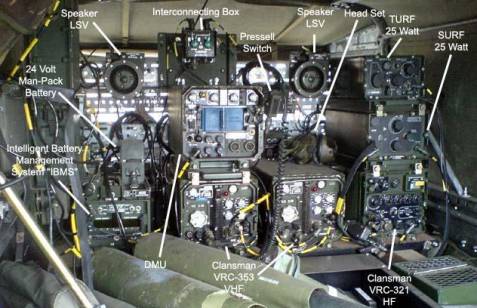
Clansman was developed by SRDE in the 1970s, to satisfy a General Staff Requirement (GSR) laid down in 1965.
Built by Racal, MEL and Plessey, Clansman represented a considerable advance over existing radios being offered to the
Armed Forces at the time. It replaced the aging Larkspur radio system, and proved to be more flexible, reliable and far
lighter. The technological advances achieved in the design of Clansman allowed the introduction of Single SideBand (SSB)
operation and NarrowBand Frequency Modulation (NBFM) to field-level communications for the first time.
The Clansman family consists of nine main radio units, three of which are carried on vehicles, the other six on the back,
across the chest, or other such places on a foot soldier.
Models are designated "UK/PRC" or "UK/VRC", which stand for "United Kingdom / Personal Radio Communications" and
"United Kingdom / Vehicle Radio Communications" respectively.
Clansman Family Componants:
UK/PRC 319 - Special Forces and STA Patrol man-portable, patrol level radio HF / VHF,
Half-duplex transceiver, which was built in the United Kingdom by MEL. Features include key-pad entry of frequency,
mode and data with digital LCD display; 10 pairs of pre-programmable channels; half-duplex operation with the option
of transmitting and receiving on different channels; the option of using a removable pocket sized electronic message
unit (EMU) to transmit and receive short data communications; fully automatic antenna tuner which can be remoted up
to 50m from the set using standard co-ax cable; Self test facility. power output is 50 watts PEP on high power setting
with an adjustable low power of 2-5 watts. Frequency range is 1.5-40 MHz allowing short range VHF communications overlap
with the other clansman series radios on the higher frequencies.
Clansman UK/PRC 319
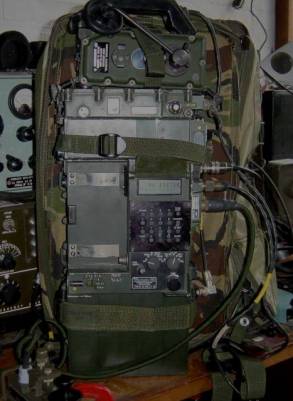
UK/PRC 349 - An intra-section level portable VHF FM transceiver. Built by Racal BCC. RF power output is 0.25 watts.
Units supplied to the British Army operate in the 37 - 46.975 MHz range, voice (FM) transmission Mode. A high power (2 Watts) output version was also available and any 10 MHz block in the range 30 - 76 MHz could be supplied. The PRC349
was added to the Clansman family in 1972.
UK/PRC349 & Headset: 5965-99-646-0323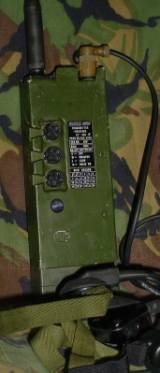 |
UK/PRC349 & Case, Radio:5820-99-643-7933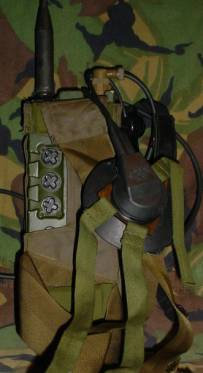 |
Clansman UK/PRC349 Hi-Power
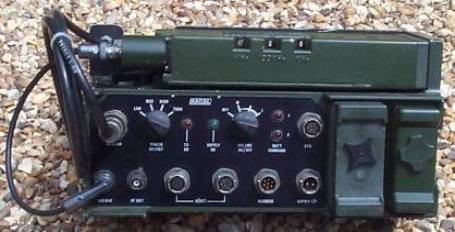
There are three main battery options for the UK/PRC349:
UK/PRC349 Battery options
12V rechargeable, 15v cassette & batteries, 15v Lithium disposable
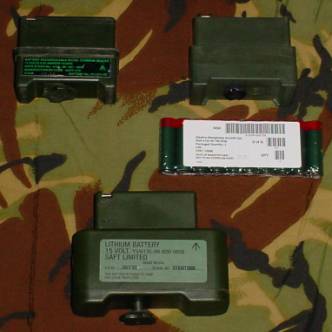
The first option is a 12 volt nickel cadmium rechargeable battery NSN 6140-99-661-4865 gives an operational life of 12-18
hours per charge, and is charged by "Adaptor, Charger DC 12V" NSN 6130-99-132-0688.
Adaptor, Charger DC 12 volt NSN 6130-99-132-0688
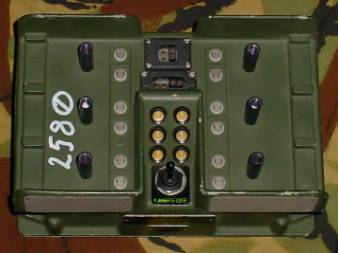
The second option is a 15 volt battery cassette NSN 6150-99-657-5246 which is loaded with ten "AA" size Alkaline Manganese
Dioxide cells NSN 6135-99-195-6708 giving an operational life of 18-24 hours.
The third option is a 15 volt Lithium disposable battery NSN 6135-99-920-0926 which gives an operaional life of 24-30 hours.
UK/PRC349 with 15 volt Lithium Battery
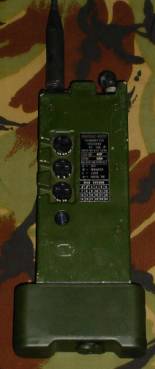
UK/PRC 351/352 - An intra-platoon level backpack VHF FM transceiver. Built by Racal. The PRC 351 has 4 watt RF power output, and operates in 30-75.975 MHz range with possible 1840 channels. A SURF (Selector Unit Radio Frequency) can be fitted to the UK/PRC 351 & 352 (but only use low power on the 352) to prevent interference with other nearby HF sets. It manually filters out the unused frequency bands by use of a control on the front of the unit, so that only the frequency in use, and those close to it, are processed by the antenna. This radio is also capable of being mounted on a vehicle in conjunction with the TUAAM. The UK/PRC 351 weighs 7.5kg.
Clansman UK/PRC 351
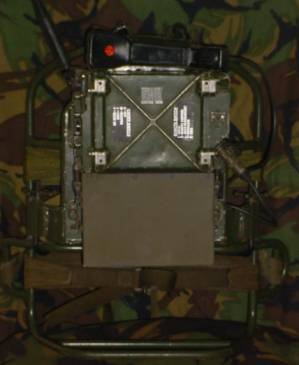
Clansman UK/PRC 351/2 24V Battery Rechargeable 6140-99-620-8057
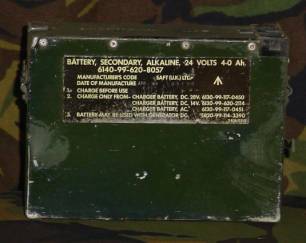
Clansman 4 watt Selector Unit Radio Frequency

The UK/PRC 352 is identical, with the addition of a 20 watt RF amplifier and can be used as a ground station, normally used with a ground-mounted antenna. The antenna gives the station a range of about 16km to a similar station. The UK/PRC 352 weighs 9kg.
Clansman UK/PRC 352 Vehicle Mounted with Generator Hand
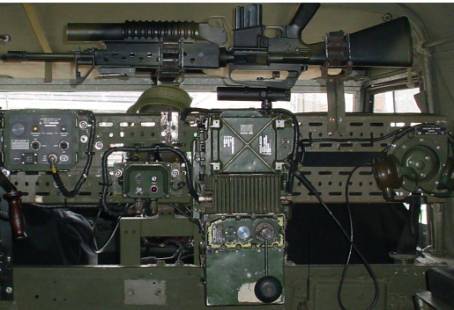
Clansman UK/PRC 352 Manpack
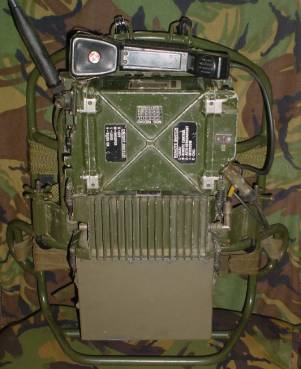
Clansman AM 352 RF Amplifier 5820-99-114-3640
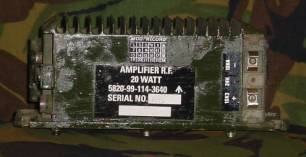
Clansman UK/PRC 352 Ground Antenna
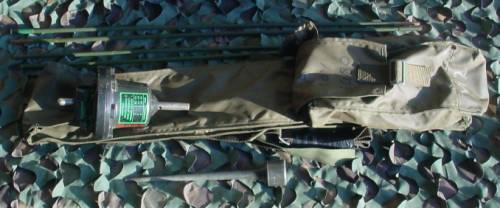
DCCU 24v Charging Unit for UK/PRC351/2 Battteries
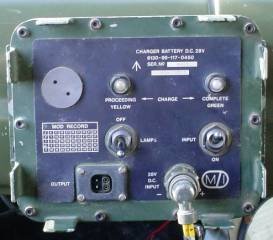
Used in conjunction with "Adaptor Charger 12v" for UK/PRC349 Batteries
UK/VRC 353 - A vehicle-mounted VHF FM transceiver built by Marconi Space and Defence Systems. The frequency range was the same as the 351/352 with power settings up to 50 W. Antenna systems are provided to provide improved performance in semi-static situations such as an elevated broadband vertical dipole mounted on an 8 metre mast. The VRC is also capable of data transmission and when used in conjunction with an add-on unit (Digital Master Unit)provides a medium level secure speech network.
Clansman UK/VRC 353
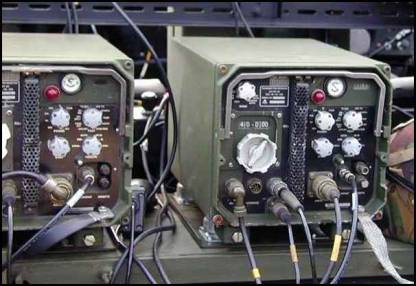
UK/PRC 320 - An intra-company level HF/USB/AM/CW transceiver. Built by Plessey. Operates in 2-29.9999 MHz range with possible 280,000 channels. RF power output is a selectable 3 or 30 watts. The PRC 320 can be used as a backpack or vehicular radio with a number of different antennas available for different circumstances and needs. It can also be used as a ground station with a dipole antenna attached to two masts for long-range communication (with the bounce effect of the ionosphere giving world-wide communication given optimum frequency and time of day). The PRC320 features a built-in TURF (Tuning Unit Radio Frequency) unit for tuning the radio to the attached antenna.
Clansman UK/PRC 320
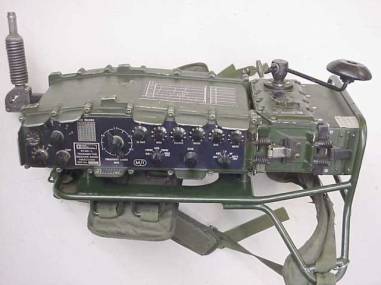
UK/VRC 321 A vehicle-borne High Frequency transmitter/receiver used for inter company communications outside of the normal working range of the VHF forward area nets, and for rear link communications to Brigade level. The VRC321 can be linked, using standard Coaxial cables, to SURF (Selector Unit Radio Frequency), to avoid interference with other HF Radios nearby; and TURF (Tuning Unit Radio Frequency), to tune the radio to the attached antenna. Modes of operation are USB/AM/CW. RF output 20 - 30 Watts. Manufactured by MEL, Crawley, Sussex.
Clansman UK/PRC 321
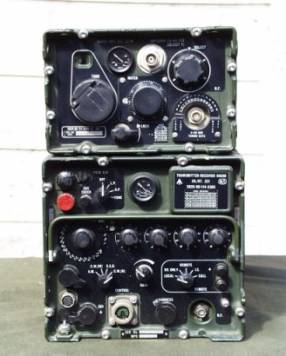
UK/VRC 322 A VRC321 station with an additional 300 Watt pep linear amplifier (ARF 250W) and appropriate high power
antenna tuning unit (TURF 250). Manufactured by MEL, Crawley, Sussex.
UK/PRC 344 - A forward air control UHF AM transceiver. Built by Plessey. Operates in 225-399.9 range with
50 kHz steps for possible 3500 channels. RF power output is rated at 2.5 watts. With the Vehicle based units, extension
equipment is available to enhance and further the use of Clansman equipment. These units popularly include:
· IBRU - Used in conjunction with the "Harness" point on VRC 353 and VRC 321 units, to operate 2 or more
sets as a Rebro. (ReBroadcast). Re-Broadcasting allows 2+ networks, on different frequencies, to be combined, effectively
increasing the ground size of the net. For instance, a vehicle using whip antennas may only be able to communicate 30km;
though placing a Rebro vehicle 30km away could extend this to 60km by re-broadcasting the signal on a second net.
· DMU - A DMU, Digital Master Unit, used in conjunction with the necessary encryption devices, can provide
secure communications on a VHF network, to other sets connected to a DMU.
· SURF - A SURF (Selector Unit Radio Frequency) is used to prevent interference with other nearby HF sets.
It filters out the unused frequency bands by use of a manual control on the front of the unit, so that only the frequency
in use, and those close to it, are processed by the TURF and the antenna.
· TURF - A TURF (Tuning Unit Radio Frequency) is used to artificially lengthen the antenna, as often HF
wavelengths are too long to be used with vehicle whips, or even vertical radiators suspended from 8 or 12 metre masts.
Using a larger antenna, such as the various dipole antennas, is not tactical when communicating in a warzone, as they
take much longer to set up and are visible from a long distance away. Furthermore, getting the antenna to exactly the
right length is still very difficult. A TURF unit can be used both to artificially lengthen shorter antennas, and fine
tune all HF antennas to exactly match the frequency in use. TURF units are considered mandatory when using 321 sets, and
thus are built into PRC 320 sets as standard. They are not built into VRC 321 sets, as when a coax cable cannot be connected
directly to the antenna (example - whilst using a sloping wire or vertical radiator), the TURF needs to be attached directly
to the antenna, and thus removed from the vehicle. The TURF requires users to manually tune the antenna, unlike the VHF
"TUAAM" which is self tuning.
· TUAAM - a TUAAM (Tuning Unit Automatic Antenna Matching) unit is essentially a TURF but for VHF. It
automatically tunes to the antenna, and artificially shortens the antenna rather than lengthening it, but essentially
performs the same function. An EVHF unit can be used on top of masts to provide the same function.
>